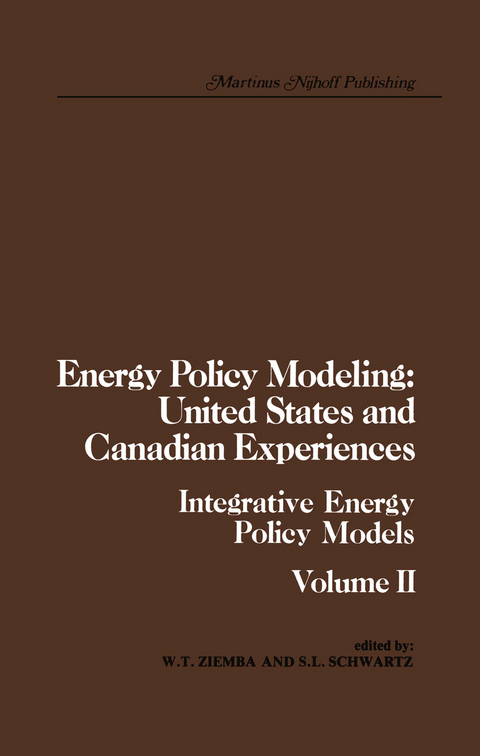
Energy Policy Modeling: United States and Canadian Experiences
Springer (Verlag)
978-94-009-8753-1 (ISBN)
I The Process of Energy Policy Modeling References.- 1 Why should Energy Models Form a Significant Policy Input in an Uncertain Political World?.- 2 Crash Mode Modeling: Analyzing the National Energy Plan.- 3 The Evaluation of Sponsored Research in Energy Storage.- 4 A Dynamic Welfare Equilibrium Framework for Projecting Energy Futures.- 5 Panel Discussion on Important Canadian Energy Decisions for the 1980s and Beyond.- II National and Regional Energy Modeling Concepts and Methods References.- 6 A Survey of Some Energy Policy Models.- 7 The Brookhaven Energy System Optimization Model: Its Variants and Uses.- 8 An Integrated Forecasting Model: A Progress Report.- 9 Network Based Regional Energy Planning Models: An Evolutionary Exposé.- 10 The Alberta Energy Resources Allocation Model.- 11 An Alberta Energy Planning Model.- 12 Time Horizons in Energy Planning Models.- 12a Appendix.- 13 How should We Compare Forecasting Models When They Differ?.- 14 Panel Discussion on the Future of National Energy Modeling.- III The Canadian-United States Gas Pipeline References.- 15 Canadian Perspectives on the Alaska Highway Pipeline: Modeling the Alternatives.- 15a Appendix.- 16 Analyzing Alaskan Gas Distribution Options.- IV The Problems of Financing Energy Development Projects References.- 17 Financing Canadian Energy to 1990: Some Supply Side Constraints.- 18 The Demand for Funds for Energy Investment in Canada.- 19 Potential Capital Cost and Financing Required for Canadian Energy Projects.
| Zusatzinfo | XXII, 378 p. |
|---|---|
| Verlagsort | Dordrecht |
| Sprache | englisch |
| Maße | 155 x 235 mm |
| Themenwelt | Naturwissenschaften ► Biologie ► Ökologie / Naturschutz |
| Naturwissenschaften ► Physik / Astronomie | |
| Technik ► Elektrotechnik / Energietechnik | |
| Wirtschaft ► Volkswirtschaftslehre | |
| ISBN-10 | 94-009-8753-6 / 9400987536 |
| ISBN-13 | 978-94-009-8753-1 / 9789400987531 |
| Zustand | Neuware |
| Haben Sie eine Frage zum Produkt? |
aus dem Bereich


